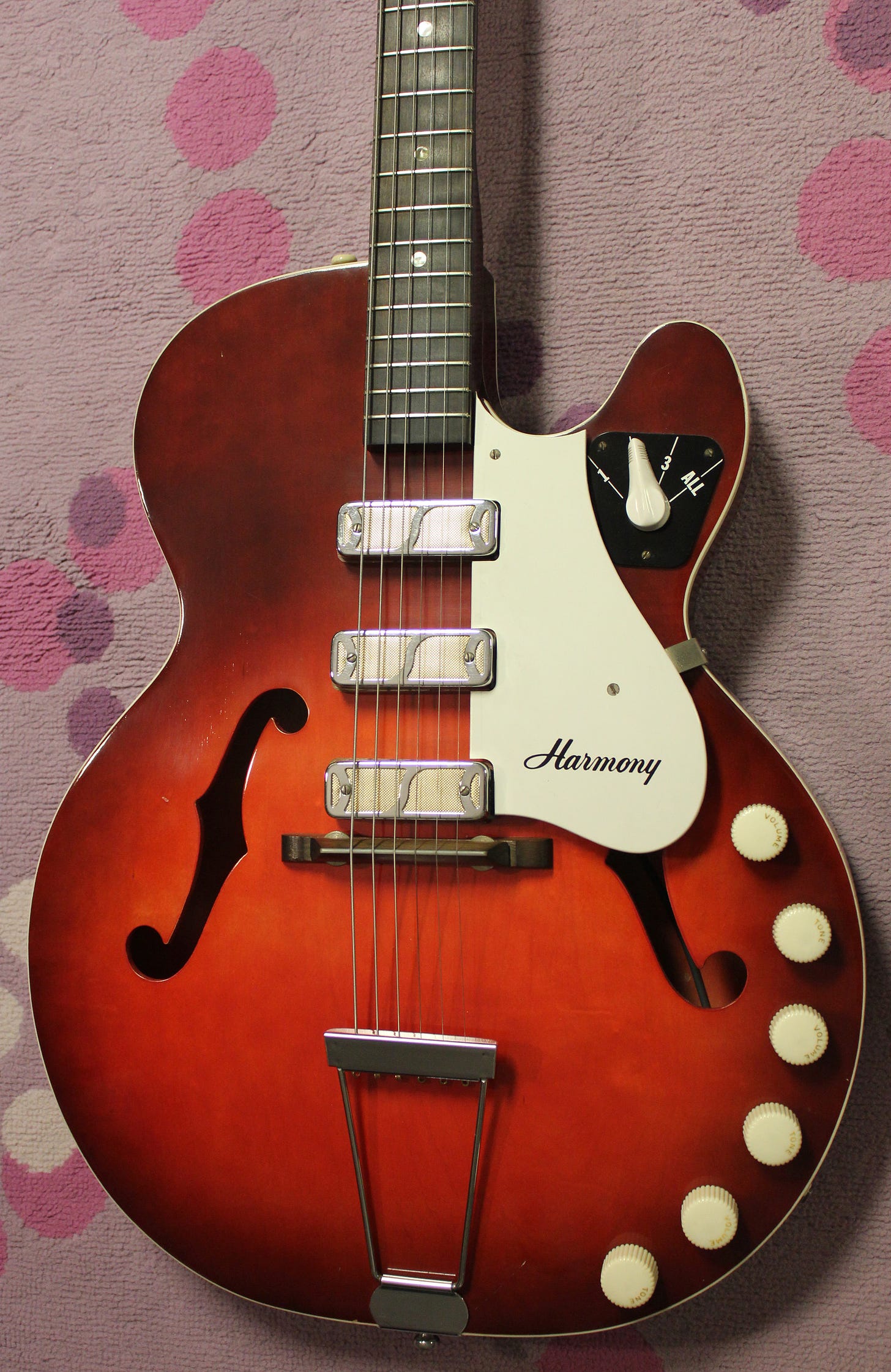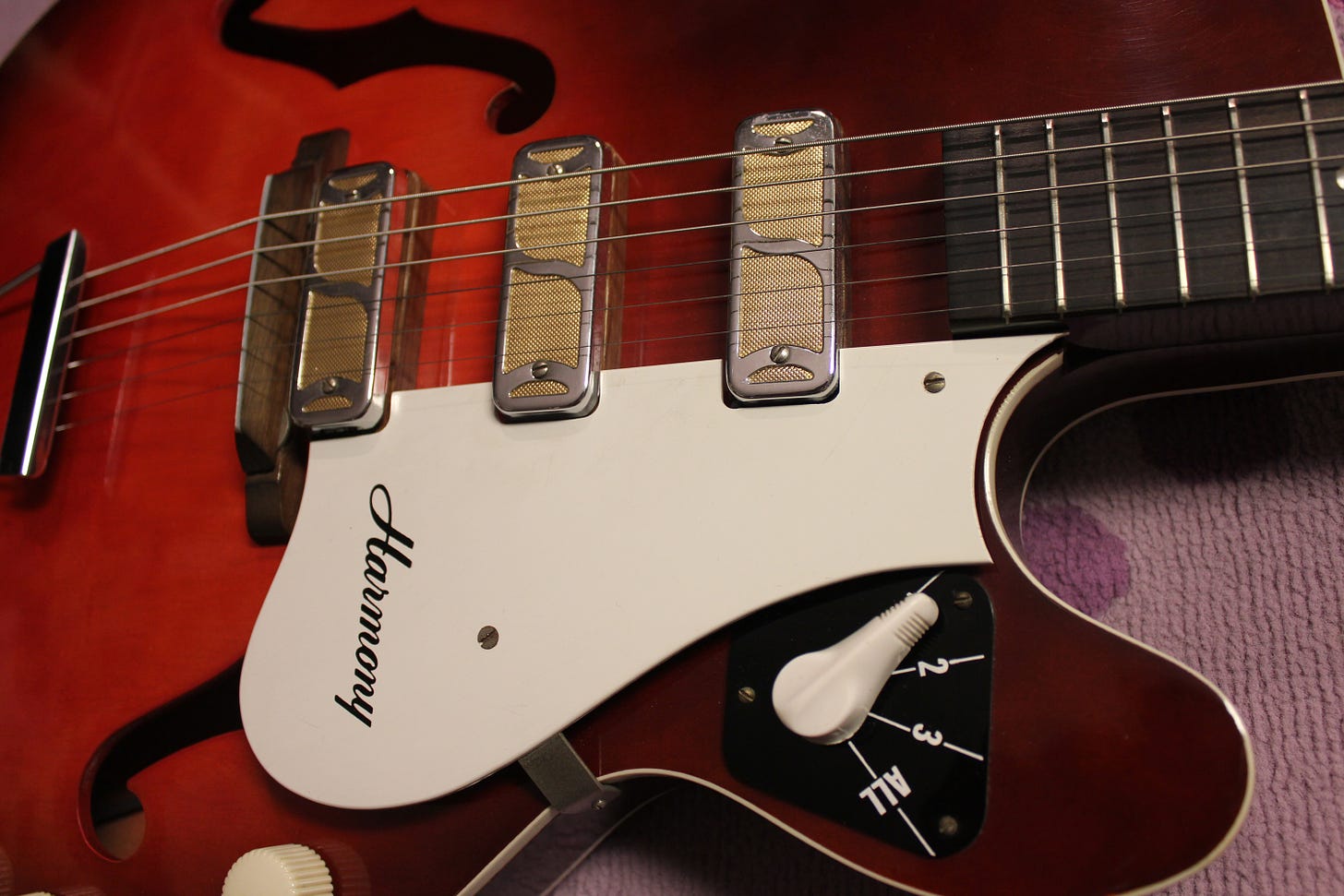Guitar Gavel Podcast with Falcon Eddy of Galveston Guitar Lounge
In this episode I have the honor of sitting down with Falcon Eddy of the Galveston Guitar Lounge.
He takes us through his guitar journey that properly began as a teenager at Gibson's department store when he bought a Teisco Del Ray, amp, and case for $29. Falcon Eddy moved up quick... next a Gibson SG and then a Gibson Dove.
He even managed to trade a bass for a car!
A lot of his journey revolved around the harmonica... there's too many guitar players :-)
Falcon Eddy then walks us through the history of his shop, the Galveston Guitar Lounge, and it begins with driving 30 miles for a pack of guitar strings. Like many brick and mortar music store owners their lineage through the business is filled with twists and turns. But adversity makes you stronger and along came the Fowlcon Guitar Company, their own line of guitars. The next step? Elissa Guitars, guitar bodies built from the deck floor of the 1877 ELISSA, a tall sailing ship and one of only three in the world that is still in operation and based in Galveston.
Sears, Roebuck & Co started selling stringed instruments in the late 1890s, mostly ukuleles and guitars built by Harmony in Chicago. The instrument line was so successful for Sears that they bought Harmony outright in 1916.
That is the same year Sears started marketing their house brand, Silvertone, beginning with a hand-crank phonograph. That morphed into radios, batteries and eventually Silvertone instruments and amplifiers.
It’s a little murky, but in 1940 Sears shed Harmony from its portfolio. At that point the instrument side of the business was so large Sears was sourcing from several manufacturers and maintained a contract relationship with Harmony. Essentially, if a guitar was made for Sears by Harmony it had the Silvertone badge. If it was made by Harmony and went to any other store, it had the Harmony badge or whomever else may have contracted with Harmony for their own brand. Further, Harmony had several subsidiary brands they acquired over the years some of which included Stella, Sovereign, and La Scala.
Those “other brands” can be surprising and include some 50 other labels. Some of FENDER’s early acoustic guitars were actually made by Harmony in the late 1960s!
The Harmony Rocket series guitars had a pretty good run from 1960 to about 1967. These were sort-of bare bones rock machines aimed at the intermediate to beginner guitarist.
Originally, all the Rockets came in sunburst, but in 1963 the redburst guitars became available, and this one right here is from that first run of reds.
These were often called the “poor man’s Switchmaster”, referring to the Gibson ES-5, and the original MSRP was $135.50 in 1960.
Frank’s words, “They’re built pretty well for mass produced instruments, and even though the DeArmond “Indox” (gold foil) pickups were cheap (cost-wise) pickups, they still hold up to any music you can throw at ’em! In fact, my favorite pickups of all time are the various 50s/60s DeArmonds and Valcos. Hands down! These little Indox pups are hot as hell and all read out in the 9k-10k range! The guitar itself is only about 2″ deep but it is fully hollow, and the pickups are so hot the guitar just wants to take off when any bit of dirt is introduced to the mix."
The vintage gold foil pickups are experiencing a renaissance as their tone has been a part of some of the most iconic rock and roll songs. A young Keith Richards’ favorite guitar was a Harmony H-70 and he played it on The Rolling Stones first album. The raw sound generated from the DeArmond’s can also be heard loud and clear on The Kinks’ You Really Got Me.
This guitar is part of the The Frank Meyers Collection available for sale on Guitar Gavel. It’s been refretted and the neck is straight and ready to go.
Guitar Gavel Lick Of The Week with Marc Stamco - 8 notes and a chord
It's a nice little lick, fill a chord transition, posture a key change, or invert. Simple and super usable. Thank you Marc for sharing your time, treasure, and talent!




